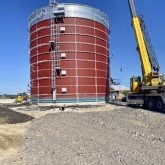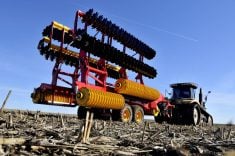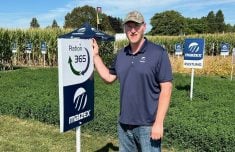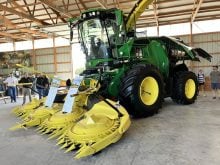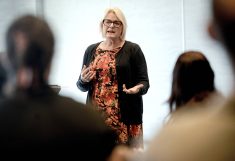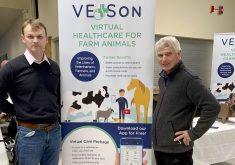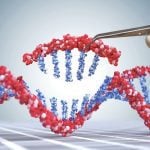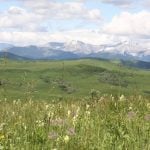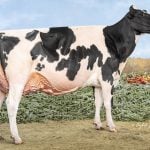Holstein heifers at Canada’s Outdoor Farm Show (COFS) had the comfort of new waterbeds which, according to manufacturer Bioret, allow the animals’ body heat to dissipate more effectively than other bedding or surfaces in the industry.
Why it matters: With Ontario’s hot summers, heat stress in dairy cattle has the potential to impact milk yield and profitability.
Bioret started in 1993 in France, where it still has its headquarters. Two years ago, Adam Steward began putting together a North American business development office and distribution centre from his farm near Hickson.
Read Also
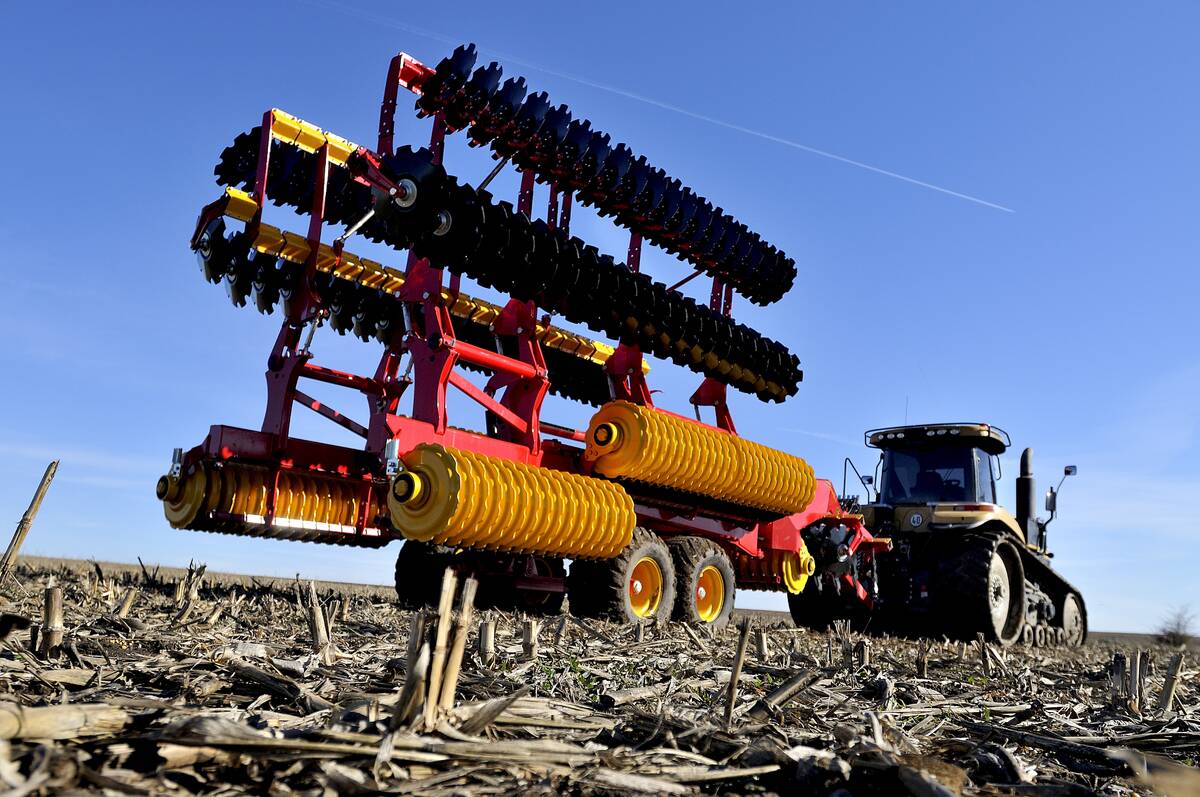
Evolution of European equipment manufacturers runs deep
A look at how Lemken and Väderstad have evolved from their traditional offerings of tillage equipment to include planting and seeding equipment in their lineups.
The company’s main business here is in mattresses and waterbeds for dairy cattle, as well as rubber flooring for dairy barns.
Speaking to Farmtario at the company’s booth in the Dairy Innovation Centre at COFS, Steward said the strength of the company comes from a policy to put 20 per cent of its revenue every year into researching new products and improvements to existing products.
On display were several Aquastar single-chambered waterbeds. During a break from his booth, Steward used a thermal energy measurement device and determined that, shortly after a heifer got up after several minutes of lying down, the Aquastar was 7 C cooler than the other lying surfaces under the same circumstances.
“With other types of bedding material, the heat is trapped under the cow,” he explained. The Aquastar, as a single chamber of water, uses conductive cooling. The rubber cover is only three millimetres thick so it can release heat quickly.
“This mattress is going to provide a cooler lying surface.”
Bioret uses virgin rubber in the cover because recycled rubber would reduce durability. It’s also reinforced with a textile inlay woven in both directions across the mattress.
“We’ve improved our original design over the years,” Steward said, adding that the 15-year warranty is the best in the market.
For other aspects of cow comfort, the mattress has a 1.5-inch latex memory foam layer at its base, “so the cow doesn’t bottom out on concrete when she puts her foot down.”
When lying down, the single chamber ensures none of the cow’s body is in contact with a hard surface, a contrast to most other bovine waterbeds on the market.
Steward said many people want the beds for their bred heifers in particular to ensure welfare and a stress-free environment as they mature toward freshening and joining the milking herd.
The kneeboard, called the Aquaboard, is also water-filled. Bioret calls it a “trauma-free, tissue-friendly barrier for the cow.” In practical terms, Steward said it enhances longevity for larger cows in the herd.
The company’s Magellan flooring is self-draining through a mesh of sloped channels within the rubber that gives it the appearance of tire tread. It’s also softer than other rubber floorings. Full-grown cows sink about three millimetres into it when they step.
Steward said the channelled flooring is in demand in Europe because of government commitments to reduce nitrous oxide emissions from livestock farms. The Magellan design can be part of a larger barn system that separates solid from liquid wastes.
One study of Bioret flooring reduced emissions by 42 per cent.
Aquastar waterbeds are big sellers in North America but Bioret also markets what it refers to as “air-conditioned” dairy waterbeds in Europe. It has installed two in Quebec and Wisconsin. These have tubes of cool water running through the rubber, which can see temperatures increase as much as 15 C after being in contact with the cow.






